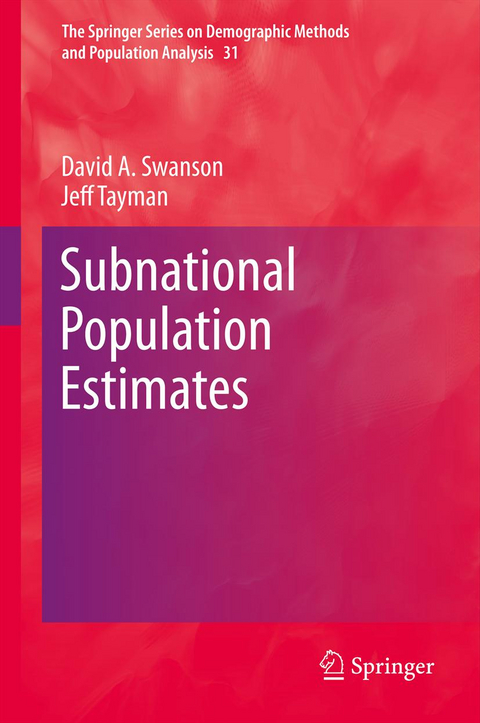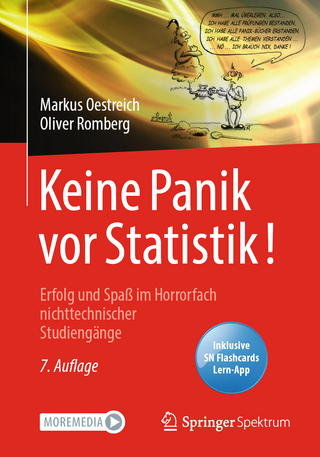
Subnational Population Estimates
Seiten
2014
Springer (Verlag)
978-94-007-9713-0 (ISBN)
Springer (Verlag)
978-94-007-9713-0 (ISBN)
Providing a unified and comprehensive treatment of the theory and techniques of sub-national population estimation, this much-needed publication does more than collate disparate source material. It examines hitherto unexplored methodological links between differing types of estimation from both the demographic and sample-survey traditions and is a self-contained primer that combines academic rigor with a wealth of real-world examples that are useful models for demographers.
Between censuses, which are expensive, administratively complex, and thus infrequent, demographers and government officials must estimate population using either demographic modeling techniques or statistical surveys that sample a fraction of residents. These estimates play a central role in vital decisions that range from funding allocations and rate-setting to education, health and housing provision. They also provide important data to companies undertaking market research. However, mastering small-area and sub-national population estimation is complicated by scattered, incomplete and outdated academic sources—an issue this volume tackles head-on. Rapidly increasing population mobility is making inter-census estimation ever more important to strategic planners. This book will make the theory and techniques involved more accessible to anyone with an interest in developing or using population estimates.
Between censuses, which are expensive, administratively complex, and thus infrequent, demographers and government officials must estimate population using either demographic modeling techniques or statistical surveys that sample a fraction of residents. These estimates play a central role in vital decisions that range from funding allocations and rate-setting to education, health and housing provision. They also provide important data to companies undertaking market research. However, mastering small-area and sub-national population estimation is complicated by scattered, incomplete and outdated academic sources—an issue this volume tackles head-on. Rapidly increasing population mobility is making inter-census estimation ever more important to strategic planners. This book will make the theory and techniques involved more accessible to anyone with an interest in developing or using population estimates.
1: Introduction.- 2: Basic Concepts.- 3: Data Sources.- 4: Basic Measures.- 5: An Overview of Estimates Methods.- 6: Extrapolation Methods.- 7: Housing Unit Method.- 8: Regression Methods.- 9: Censal Ratio Methods.- 10: Component Methods.- 11: Sample Based Methods.- 12: Other Methods.- 13: Special Cases and Adjustments.- 14: Evaluating Estimates.- 15: Guidelines for Developing Estimates.- 16: De Facto Populations and Populations Impacted by Disasters.-17: Historical and Pre-historical Populations.- 18: Future Directions in Population Estimates.- Glossary.-A Demography Timeline Relevant to Population Estimates.
| Erscheint lt. Verlag | 11.6.2014 |
|---|---|
| Reihe/Serie | The Springer Series on Demographic Methods and Population Analysis ; 31 |
| Zusatzinfo | XIV, 414 p. |
| Verlagsort | Dordrecht |
| Sprache | englisch |
| Maße | 155 x 235 mm |
| Themenwelt | Mathematik / Informatik ► Mathematik ► Wahrscheinlichkeit / Kombinatorik |
| Sozialwissenschaften ► Soziologie ► Allgemeine Soziologie | |
| Sozialwissenschaften ► Soziologie ► Empirische Sozialforschung | |
| Sozialwissenschaften ► Soziologie ► Spezielle Soziologien | |
| Schlagworte | Administrative planning • Applied demography • Census statistics • DeFacto populations • DeJure populations • Demographic and statistical sample surveys • Demographic tradition • Demography • estimation methods • Extrapolation methods • Housing unit method • National and subnational fund allocations • Population change • Population registration system • "Postcensal" estimation methods • Subnational areas • Subnational estimation methods • Survey controls • urban planning |
| ISBN-10 | 94-007-9713-3 / 9400797133 |
| ISBN-13 | 978-94-007-9713-0 / 9789400797130 |
| Zustand | Neuware |
| Informationen gemäß Produktsicherheitsverordnung (GPSR) | |
| Haben Sie eine Frage zum Produkt? |
Mehr entdecken
aus dem Bereich
aus dem Bereich
Erfolg und Spaß im Horrorfach nichttechnischer Studiengänge
Buch | Softcover (2023)
Springer Spektrum (Verlag)
39,99 €
Buch | Softcover (2024)
Springer Spektrum (Verlag)
44,99 €


